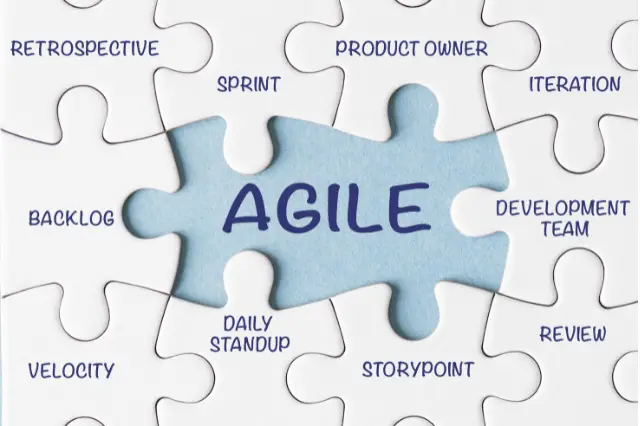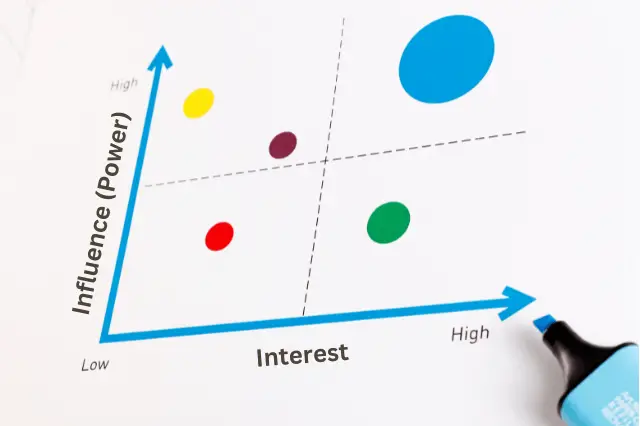Last Updated on November 17, 2024 by andrewshih
Scope creep is a common challenge in project management, leading to project delays and budget overruns.
Understanding what scope creep is and how to manage it effectively is crucial for project success.
- What is Scope Creep?
- The Purpose of Understanding Scope Creep
- When to Use Scope Creep Management
- Advantages and Disadvantages
- Steps to Manage Scope Creep
- Examples of Scope Creep
- Scope Creep vs. Scope Change vs. Gold Plating
- Scope Creep in Agile Environment
- Waterfall (Predictive) Environment
- Scope Creep in Hybrid Environment
- Conclusion
- FAQ
What is Scope Creep?
Scope creep, also known as requirement creep or kitchen sink syndrome, occurs when additional features, tasks, or requirements are added to a project without proper change control processes. This often happens gradually, making it hard to identify until it has significantly impacted the project.
The Purpose of Understanding Scope Creep
Understanding scope creep helps project managers maintain control over the project’s scope, schedule, and budget.
By recognizing and addressing scope creep early, project managers can prevent potential project failures and ensure that the project stays aligned with its original objectives.
When to Use Scope Creep Management
The project manager should apply effective scope creep management throughout the project lifecycle, especially during the planning and execution phases.
This involves setting clear project requirements, implementing strict change control processes, and maintaining open communication with stakeholders.
Advantages and Disadvantages
Scope creep has clear disadvantages and managing scope creep can be a challenge for project managers. However, there are still advantages if the project manager manages the scope creep properly.
Advantages
-
Enhanced project deliverables: Properly managed scope changes can lead to improved project outcomes.
-
Better stakeholder satisfaction: Addressing additional requirements can increase stakeholder satisfaction.
Disadvantages
-
Budget overruns: Uncontrolled scope changes can lead to increased costs.
-
Delays: Additional tasks can extend the project timeline.
-
Resource strain: More work requires additional resources, potentially overburdening the team.
Steps to Manage Scope Creep
- Define Project Scope Clearly:
- Document all project requirements and objectives.
- Use a project charter or scope statement.
- Implement Change Control Processes:
- Establish a formal process for requesting, reviewing, and approving changes.
- Use change request forms and maintain a change log.
- Communicate Effectively:
- Keep all stakeholders informed about project progress and any potential changes.
- Conduct regular meetings to discuss project status and scope.
- Monitor and Control:
- Continuously track project progress against the original scope.
- Use project management tools to monitor changes and impacts.
Examples of Scope Creep
Example 1: Website Development Project A website development project initially aimed to create a basic informational site. Over time, the client requested additional features like e-commerce functionality and a blog section, significantly increasing the project scope and timeline.
Example 2: Software Development Project A software project started with the goal of developing a simple inventory management system. Stakeholders later requested additional reporting capabilities and integration with other systems, leading to scope creep.
Scope Creep vs. Scope Change vs. Gold Plating
Scope Creep
- Uncontrolled changes to the project scope without proper approval.
- Often results from poorly defined project requirements or weak change control processes.
Scope Change
- Controlled and documented changes that go through a formal approval process.
- Managed through a change control board (CCB) and includes impact analysis.
Gold Plating
- Adding extra features or enhancements that were not originally planned or requested.
- Unlike scope creep, the project team initiates the gold plating, often with the intention of exceeding stakeholder expectations.
- It can lead to unnecessary complexity, increased costs, and potential delays.
Scope Creep in Agile Environment
Agile methodologies, such as Scrum and Kanban, are designed to be flexible and adaptive to change.
In Agile, scope creep is often managed through iterative development cycles and continuous stakeholder engagement. User stories and backlogs allow for changes to be prioritized and integrated more fluidly.
However, it still requires vigilant management to prevent uncontrolled growth that could derail sprints and overall project goals.
Agile Scope Creep Example
In an Agile project developing a mobile app, new features like additional payment gateways or social media integration are requested mid-sprint without proper prioritization.
Management Strategy:
- Prioritization: Use the product backlog to prioritize new requests.
- Sprint Planning: Assess new requests during sprint planning sessions.
- Stakeholder Communication: Keep stakeholders informed about the impact of changes on the timeline and budget.
Waterfall (Predictive) Environment
In Waterfall or predictive environments, projects follow a linear, sequential approach with defined phases.
Scope creep in this context can be more challenging to manage because changes late in the process can have significant impacts on timelines and budgets.
Strict change control processes and thorough initial planning are crucial to mitigate scope creep in Waterfall projects.
Waterfall Scope Creep Example
In a Waterfall project for building a new office, stakeholders request design changes after the architectural plans are finalized, causing delays and budget overruns.
Management Strategy:
- Change Control Process: Implement a formal change control process to evaluate and approve changes.
- Documentation: Update project documentation to reflect changes.
- Impact Analysis: Conduct a thorough impact analysis to understand how changes affect the project scope, timeline, and budget.
Scope Creep in Hybrid Environment
A hybrid project management environment combines elements of both Agile and Waterfall methodologies. Managing scope creep in such settings requires a balanced approach:
- Planning: Establish clear requirements upfront (Waterfall) while allowing flexibility for iterative changes (Agile).
- Change Control: Implement formal change control processes for significant changes, alongside adaptive planning for minor tweaks.
- Communication: Foster continuous communication with stakeholders to address scope changes proactively.
- Monitoring: Use both Agile tools (like backlogs) and traditional tracking methods to monitor scope and manage changes.
Hybrid Scope Creep Example
In a hybrid project developing a software tool with both Agile and Waterfall elements, new regulatory requirements are introduced during development, impacting both the iterative software updates and the overall project timeline.
Management Strategy:
- Balanced Approach: Combine Agile flexibility with Waterfall’s structured change control processes.
- Continuous Communication: Maintain regular communication with stakeholders to manage expectations.
- Adaptive Planning: Adjust project plans iteratively to accommodate new requirements while keeping the overall project goals in sight.
Conclusion
Managing scope creep is essential for project success.
To prevent it, clearly define your project scope, implement strict change control processes, and maintain open communication with stakeholders.
Understanding the differences between scope creep, scope change, and gold plating helps ensure that all project modifications are managed appropriately, keeping the project on track and within budget.
Whether you’re using Agile, Waterfall, or a hybrid approach, effective scope management practices are essential for delivering successful projects. Balancing structured planning with flexibility is key to managing scope creep in any environment.
Related Articles:
FAQ
What is another word for scope creep?
Another term for scope creep is “requirement creep” or “feature creep.” These terms similarly describe the uncontrolled addition of features or tasks to a project.
How can you prevent scope creep from occurring?
Preventing scope creep involves:
- Clearly defining project scope and objectives from the outset.
- Implementing a robust change control process.
- Regularly communicating with stakeholders to manage expectations.
- Conducting thorough requirement analysis to understand all needs upfront.
- Using project management tools to monitor progress and changes.
What are the signs of scope creep?
Signs include:
- Frequent addition of new tasks or features without formal approval.
- Budget overruns and timeline delays.
- Increased workload without additional resources.
- Stakeholder dissatisfaction due to unmet expectations.
- Deviation from the original project goals and deliverables.
Can scope creep ever be beneficial?
While generally seen as a negative, scope creep can occasionally be beneficial if it leads to enhanced project deliverables that significantly improve stakeholder satisfaction and project value. However, these changes must be managed carefully to avoid negative impacts on budget and timeline.
What role do stakeholders play in managing scope creep?
Stakeholders play a crucial role by:
- Providing clear and consistent requirements.
- Participating in regular project reviews and approvals.
- Communicating any changes or new needs promptly.
- Collaborating with the project team to prioritize changes and understand their impact.
How does scope creep impact project team morale?
Scope creep can negatively impact team morale by causing increased workload, stress, and frustration due to constantly changing requirements. It can also lead to burnout and decreased job satisfaction if not managed properly. Clear communication and well-defined change control processes can help mitigate these effects.
What is the most common reason for scope creep?
The most common reason for scope creep is unclear or poorly defined project requirements. When initial requirements are not well-documented or understood, it becomes easy for additional tasks and features to be added without proper oversight.



